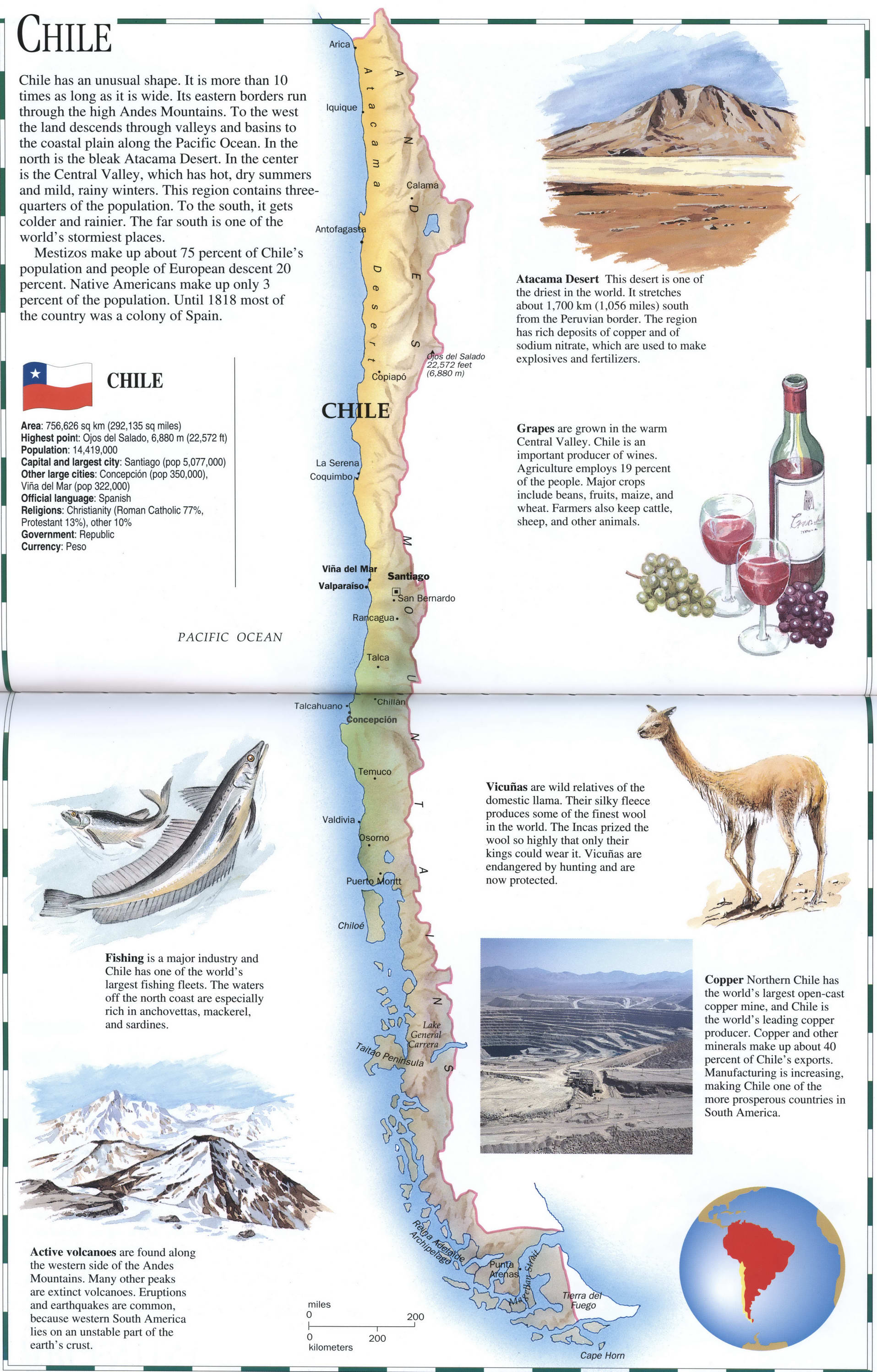Chile detailed geographic map. Map of Chile with a brief geographical description. Chile on the world map.
Map of Chile with a brief geographical description. Chile on the world map.
Geographic map of Chile. A large detailed geographical map of Chile with the terrain and detailed information about the state with facts and figures.

Chile geographic description
Chile has an unusual shape. Il is more than 10 limes as long as il is wide. lis eastern borders run through the high Andes Mountains. To the west the land descends through valleys and basins to the coastal plain along the Pacific Ocean. In the north is the bleak Atacama Desert. In the center is the Central Valley, which has hot, dry summers and mild, rainy winters. This region contains three-quarters of the population. To the south, it gets colder and rainier. The far south is one of the world's stormiest places.
Mestizos make up about 75 percent of Chile's population and people of European descent 20 percent. Native Americans make up only 3 percent of the population. Until 1818 most of the country was a colony of Spain.
CHILE highlights
Area: 756.626 sq km (292.135 sq miles)
Highest point: Ojos del Salado, 6.880 m (22.572 It)
Population; 14.419,000
Capital and largest city: Santiago (pop 5.077,000)
Other large cities: Concepcion (pop 350,000), Vina del Mar (pop 322.000)
Official language: Spanish
Religions; Christianity (Roman CathoSc 77%, Protestant 13%), other 10%
Government: Republic
Currency: Peso
Atacama I>esert This desert is one of the driest in the world. It stretches about 1.700 km (1.056 miles) south from the Peruvian border. The region has rich deposits of copper and of sodium nitrate, which are used to make explosives and fertilizers.
CIrapes arc grown in the warm Central Valley. Chile is an important producer of wines. Agriculture employs 19 percent of the people. Major crops include beans, fruits, maize, and wheat. Farmers also keep cattle, sheep, and other animals.
Pishing is a major industry and Chile has one of the world's largest fishing fleets. The waters off the north coast are especially rich in anchovettas. mackerel, and sardines.
Active volcanoes .ire found along the western side of the Andes Mountains Many olhcr peaks arc extinct volcanoes. Irruptions and earthquakes arc common, because western South America lies on an unstable part of the earth's crust.
Vicunas are wild relatives of ihe domestic llama. Their silky fleece produces some of the finest wool in the world. The Incas pn/cd the wool so highly that only their kings could wear it. Vicunas are endangered by hunting and are now protected.
Copper Northern Chile has the world's largest open-cast copper mine, and Chile is the world's leading copper producer Copper and other minerals make up about 40 percent of Chile's exports. Manufacturing is increasing, making Chile one of the more prosperous countries in South America
